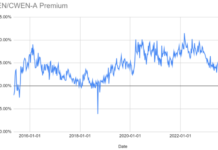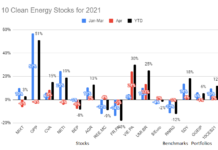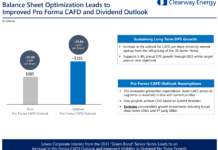by Sean Kidney
“There is more liquidity than ever being put into the system, but funds are still not being allocated to renewable energy projects”
“The bottleneck for renewable energy is not in construction financing but a year or two after construction [re-financing].”“[Renewable Energy] is not an asset class where risk changes over time – it changes [only] between pre-completion to post-completion stages… it is incorrect to think that offloading an asset post-completion dumps risk onto others because the riskier part of the project is past.”
“Alignment of interest with investors is strong as the issuing bank retains the credit risk in Covered Bonds.”
On 14 December some 40 people attended a Renewable Energy Covered Bonds Roundtable London, either in person of via teleconference facilities. It was a very interesting discussion; highlights are noted below.
Click here for the original paper proposing Renewable Energy Covered Bonds.
Members of the Roundtable Discussion Panel were:
- Frank Damerow: LBBW bank, Climate Bonds Advisory Panel
- Sean Kidney: CEO Climate Bonds Initiative
- Stuart Clenaghan: Climate Bonds Advisory Panel
- Christoph Anham: Royal Bank of Scotland, Head of Covered Bond Origination
- Angela Clist: Allen & Overy, Partner. Experience: Worked on first covered bond in UK and on committee setting up law, involved in setting up other laws in Canada, NZ, Belgium, Greece and Cyprus. Currently working with World Bank on covered bond regimes in Latin America.
- Julia Hoggett: Bank of America Merrill Lynch, Managing Director, Head of Short Term Fixed Income Origination, EMEA, Head of Covered Bonds and FIG Flow Financing, EMEA
- Alexandre Chavarot: Clinton Climate Initiative, Climate Bonds Advisory Panel
- Fabrizio Baicchi: CitiBank, infrastructure energy finance
- Sarah Eastabrook: Alstom, Head of Strategy Development. Perspective is on the project end and how and financial products might help with scale up.
- Karlo Fuchs: Standard and Poor’s, Structured Finance
- John Hale: Association of British Insurers, fixed income committee
- Georg Grodski: Legal & General, Head of Credit Research: The preferred way of investing is to do it themselves even if it’s more resource intense as they know what they are getting into.
- Paul Guire: ICAP CEO. ICAP is involved primarily in the secondary markets and is very involved in the Pfandbriefe market
Introduction
The financial requirements for a transition to a low carbon economy are huge ($1trn p.a. above business as usual, according to the International Energy Agency), and policy makers are looking for ways to encourage such investment. However there is a massive shortfall between targeted and current levels of investment.
Given recapitalisation pressures of the banking sector, this gap will not currently be able to be bridged by bank lending. Pressure on bank balance sheets means that they are not willing to hold long-term assets such as renewables on their balance sheets so lending will remain constrained unless banks have an exit strategy (as they have for mortgages). There is, therefore, currently credit capacity to finance a sizeable amount of short term construction risk, but limited capacity to fund the term take-out.
On 14 December 2012, a group of 30 finance experts and investors was convened in London by the Climate Bonds Initiative in a Roundtable to discuss the possibility of bridging part of this finance gap through the development of a Renewable Energy (RE) Covered Bonds market.
Covered Bonds are an on-balance sheet financing mechanism, where the holder has recourse to a pool of assets (cover pool) in the event of a default by the issuer.
Covered bonds have been used for decades to pursue policy imperatives such as homeownership (where mortgage loans are used as the cover pool). Given their dual recourse nature, Covered Bonds could help to address the finance gap by allowing pools of RE loans to support highly rated Covered Bonds.
The participants see covered bonds as one of a myriad of potential financing options available for RE all of which will need to be utilised to bridge the finance gap. Therefore while Covered Bonds may not be the lowest hanging fruit, they are an important tool which may be suitable to certain assets and investors.
Discussion points at the roundtable
The idea to build a renewable energy Covered Bond market is still in a concept stage and therefore the roundtable was held to discuss issues, practicalities and process to define whether or not the idea should be pursued further. The following topics were covered at the meeting:
Changes to legislation
Substantial changes are required in most jurisdictions to allow renewable energy assets to act as collateral and form a cover pool. Changing legislation can take time, suggesting RE Covered Bonds might be a long rather than short term option for example in Germany it took 5-6 years for aviation covered bonds to be approved. The development of a fully-fledged covered bonds market was therefore seen by the group as a 5-7 year project, assuming the process starts now.
However, a shorter term option might to allow existing mortgages that have a qualifying green aspect – solar cells on the roof, or a high level of energy efficiency – to be used as a separate cover pool. Ideally governments would then attach a differentiated risk weighting for these, further educing the costs of finance for banks and for green end-homeowners. For governments, agreeing on definitions may be an issue; however definitional work is part of the remit of the Climate Bond Standards and should be able to be used.
Quality, diversity and track record of assets
Typically, Covered Bonds are backed by a portfolio of liquid, transparent and stable assets. While pools of mortgage loans are relatively homogenous and therefore meet these criteria, each renewable asset is “different to the next”. They vary significantly in size, type and quality and may be difficult to put into a single cover pool.
In addition to this, RE assets do not presently have a long enough track record in the debt market for an accurate credit rating process to be conducted; however, such adequate track records are likely to exist by the time new legislation can be brought into being, and it may be possible to accelerate the process by conducting performance reviews of existing wind bonds.
In the short term there is still scope for RE Covered Bond issuance where cash flow characteristics are strong (i.e. Feed-in Tariffs – FiTs) and where overcollateralization is part of the structure to compensate investors for this additional risk. Initially, the haircut required for RE assets to serve as collateral and for a bond to get a good credit rating would need to be significant but, as the track record increases, the required haircut should also decrease.
Cost of issuing a covered bond
The up-front cost of structuring, issuing and running a Covered Bonds programme is high, but in case of repeat issuance can be more favourable when compared to securitisation. For RE, as for all other covered bond assets, a bond would only be issued in cases where it is deemed to be worth these costs. Such cases could include:
- where the capital raised is sufficient to offset these costs; covered bonds can prove more cost effective than other forms of funding due to their wide recognition
- when a broader range of investors can be attracted who wouldn’t otherwise be interested;
- if other methods of financing have been e
xhausted.
Metrics for financing
Financing for covered bonds is usually done on a loan to value basis; this may not be possible for renewable energy where cash flow predictability is the important metric. Feed-in Tariffs can play a pivotal role here. Solving these technical issues is pivotal for the long-term development of fully-fledged covered bond market.
However short term proposals (see below) do not require for this to be solved. In the long-term and as the assets gain a longer track record, adequate metrics and appropriate regulation will be discussed and proposed.
Ability to re-sell assets in the event of default
In the event of default, assets will need to be liquidated in order to compensate bond holders. However, selling renewable assets may prove challenging particularly if there is a time limit on the sale. Wind farms, for example, cannot easily be dismantled and there is a cost involved in doing this. However, they can continue to be operated by a new owner post-bankruptcy..
While this was seen as a concern if a utility or developer issued a Covered Bond, there was general consensus that the bottleneck in RE financing exists for term re-financing rather than for construction financing. As such, it is anticipated that issuances will be backed by cover pools of RE loans rather than the assets themselves. Liquidation potential is therefore less of a concern if a default occurs.
The way forward
There was widespread acknowledgement by the group that renewable assets are not like mortgage assets (generic, good track record, granular asset pool, high quality and liquid) and are unlikely to become so in the short term. However, the value of using covered bonds as one of the tools to bridge the finance gap for low carbon infrastructure was also clear. Therefore, in order for this idea to move forward, both short term and long-term proposals are necessary.
Short term
It is possible that legislative change could be accomplished quickly (1-2 years) by a determined government; but the most likely time-frame is around 5 years.
However, there are also some short and medium term options not requiring legislation that could be considered:
a) Demonstration issuance with development support
In the short-term, demonstration RE Covered Bonds could be issued under existing regulatory environments, assuming an adequate cover can be assembled.
There are precedents for issuing covered bonds that are not governed by legislation. In particular, ”structured” covered bonds are issued in a number of markets that don’t have special covered bond laws; the terms and conditions are simply defined in the issue-specific legal documentation rather than legislation.[1]
There are a few investors interested in this asset class & structure, particularly when getting them involved at an early stage of the structuring process. The search for assets, the hunger yield and the need of 10yr+ plus tenors are strong driving factors.
We believe there is potential to develop a Structured Covered Bond in Germany, Austria, Switzerland, the United Kingdom and the Netherlands.
It may be that without the benefits of eligibility under regulated schemes, the success of a Structured Covered Bond will depend on a modest level of credit support from government or development banks, for example providing an insurance wrapper. Our aim will be to see if it can be done without such support.
b) Green mortgages
In the European Union an option for the medium-term would enable mortgages for buildings that meet certain green criteria (e.g. solar panel or energy efficiency technology installed) to have a different risk-weighting attached to them compared to standard mortgages. As a result homeowners would be able to get a discount on the running costs of their mortgage from mortgage provider.
That differential could be achieved with either a change to the eligibility criteria governed by either national regulation (or, in the EU, by the Capital Requirements Directive) or possibly because energy efficient housing assets and green mortgage bonds are seen to have better credit characteristics than old stock
Because this would involve a only a modest variation of rules for existing eligible loan pools, this may be politically achievable at national levels. These mortgages would go into a dedicated covered bonds pool – thus allowing a green mortgage cover pool without requiring significant changes to legislation.
Long term
In the long term, it should be possible to create a fully-fledged covered bonds market. This will require proposals to change the legislative and regulatory framework as well as the building up of a track record for renewable assets.
This process of achieving regulatory change, primarily by expanding the list of eligible assets for cover pools to include RE, will take some years and requires clarity on FiTs over many years in grid-based energy supply policy. Initial feasibility studies can be conducted to ascertain which jurisdictions have the highest potential for developing a market. The group thought that potential candidates would be the UK, Austria and the US.
Conclusion
- Despite some hurdles, initial discussions have indicated that the concept is worth pursuing but that different products are applicable and/or viable in the short term and the long term.
- A fully regulated Renewable Energy Covered Bond market will take legislative and regulatory change; that process of change will invariably take some years.
- While we see that as an important longer-term objective, in the short-term we will focus on options that do not require legislative support, such as separating and differentially risk-weighting green mortgages, demonstration Structured Covered Bonds, potentially supported by public sector banks, and other models that would work within existing legislative arrangements.
- The Steering Group, formed of industry experts Christoph Anhamm, Stuart Clenaghan, Angela Clist, Frank Damerow, Sean Flannery, Julia Hoggett and Sean Kidney, will take these discussions forward.
[1] As cited in Global Financial Stability Report: Navigating the Financial Challenges Ahead. IMF 2009. http://www.imf.org/external/pubs/ft/gfsr/2009/02/pdf/text.pdf
Sean Kidney is Chair of the Climate Bonds Initiative, an “investor-focused” not-for-profit promoting long-term debt models to fund a rapid, global transition to a low-carbon economy.








